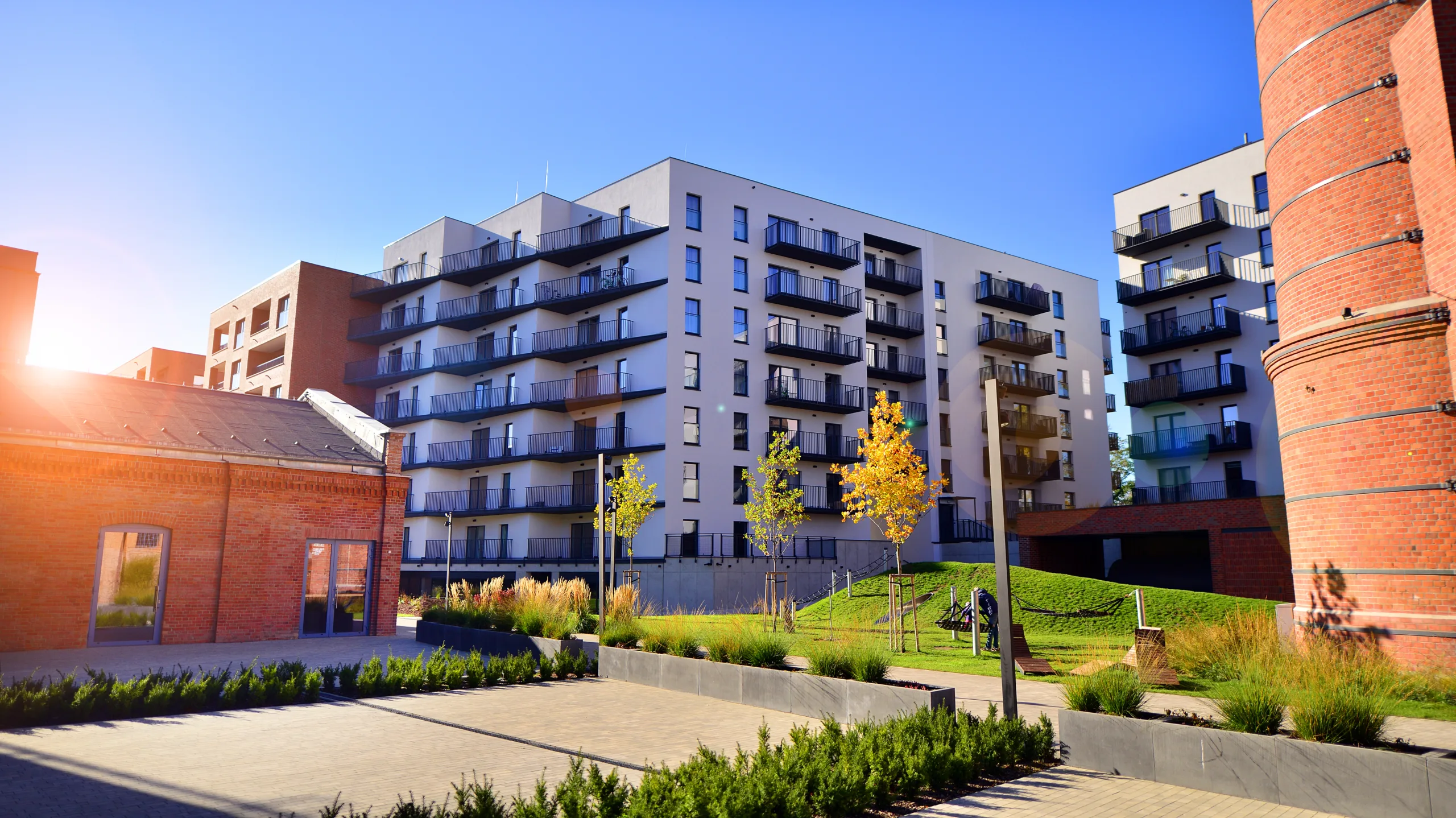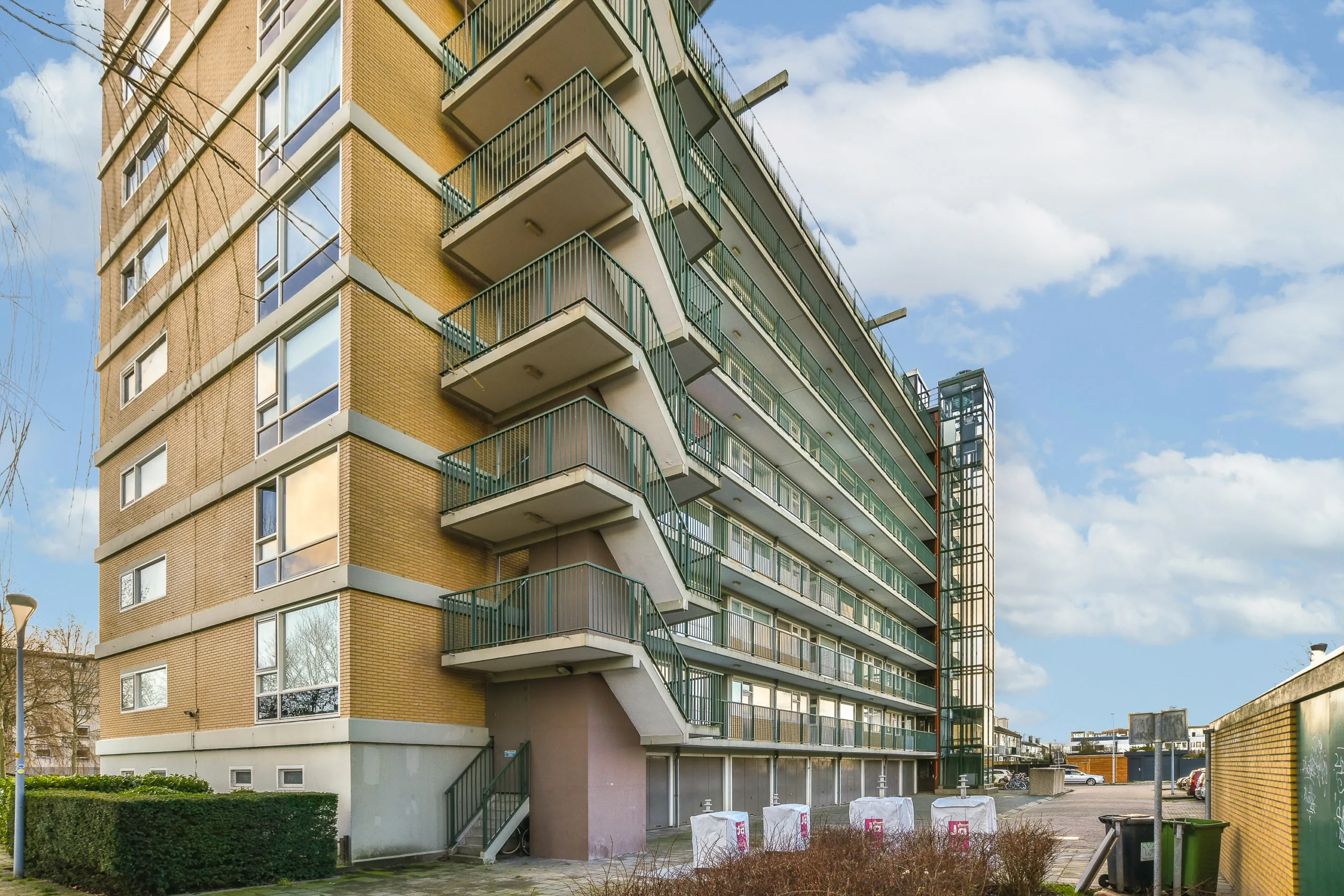- Hybrid workplace strategies are now standard, with most sectors adopting flexible space and seat-sharing models.
- Design and people density are stabilizing as organizations optimize for both efficiency and employee experience.
- Collaboration ratios vary by sector, reflecting different cultural and operational needs.
- Space composition is shifting, with more emphasis on support and amenity areas and less on individual workstations.
Who’s Leading The Workplace Evolution?
The interplay between hybrid work, space usage, and experience-driven design is transforming the modern office, with sector-specific strategies emerging. According to CBRE’s latest report, no industry is standing still.
Get Smarter about what matters in CRE
Stay ahead of trends in commercial real estate with CRE Daily – the free newsletter delivering everything you need to start your day in just 5-minutes
Moving Toward Balance
After major swings during the pandemic, design density is settling. Healthcare, for example, saw a 75% rise between 2021–2022 but has since contracted to match levels seen in FPS at around 160 SF per seat. Most sectors now show less than 10% year-over-year change, signaling a new baseline for how much space employees need.
People density tells a similar story. Infrastructure & Public Enterprise dropped density by 51% since 2021 — a sign of early hybrid adoption — while Healthcare is swinging back toward pre-pandemic norms after a 58% drop in SF per person in the last year. Across sectors, the range now sits between 160 and 236 SF per person, a 53% reduction in spread since 2021.

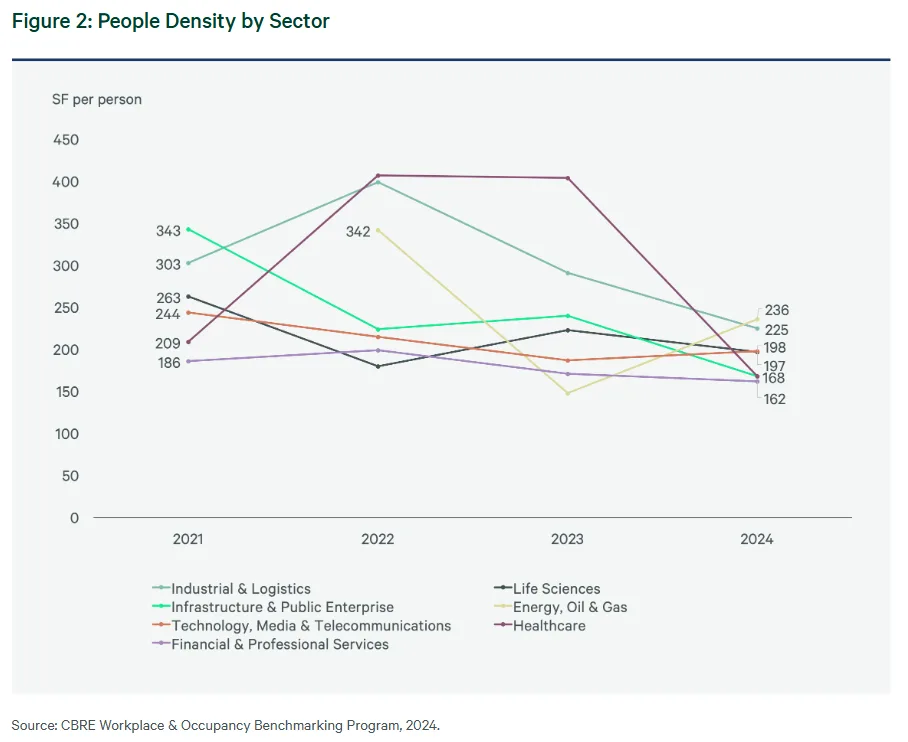
Shifting Priorities
The Life Sciences sector leads in collaborative environments, with 1.09 collaboration seats per individual — 36% higher than average — reflecting a culture rooted in innovation. Meanwhile, FPS has reduced collaboration space significantly, with a 59% drop since 2021, amid cost-saving efforts and space reductions.
Healthcare’s dramatic rise in collaboration seating (up 94% between 2021–2023) shows it’s embracing new workstyles. That trend has since leveled, suggesting new norms have taken hold.

Flexibility Is Standard — With One Big Exception
Nearly two-thirds (62%) of organizations now target seat-sharing ratios of 1.5:1 or greater. This signals widespread acceptance of hot-desking and activity-based work.
Interestingly, TMT — once the pioneer of seat-sharing — is pivoting back toward assigned seating. In 2024, 43% of TMT firms reported a 1:1 seating ratio, a 115% increase from 2021. The shift reflects return-to-office mandates and a renewed emphasis on individual workspace, especially among large tech employers.
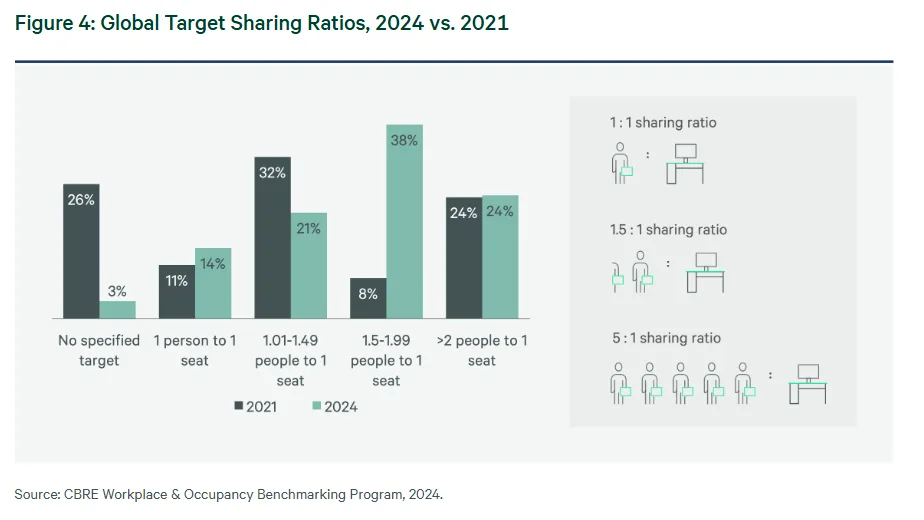
Amenity And Support Spaces Rise
Workplace design is now firmly centered on hybrid realities. Over the past year:
- “Me” space (individual work areas) declined by 11%
- Support space rose by 16%
- Amenity space increased by 6%
- “We” space (collaborative areas) held steady
This stabilization suggests companies have found their footing in hybrid workplace planning. While trends from 2021–2023 saw abrupt reconfigurations, 2024 marks a move toward consistency.
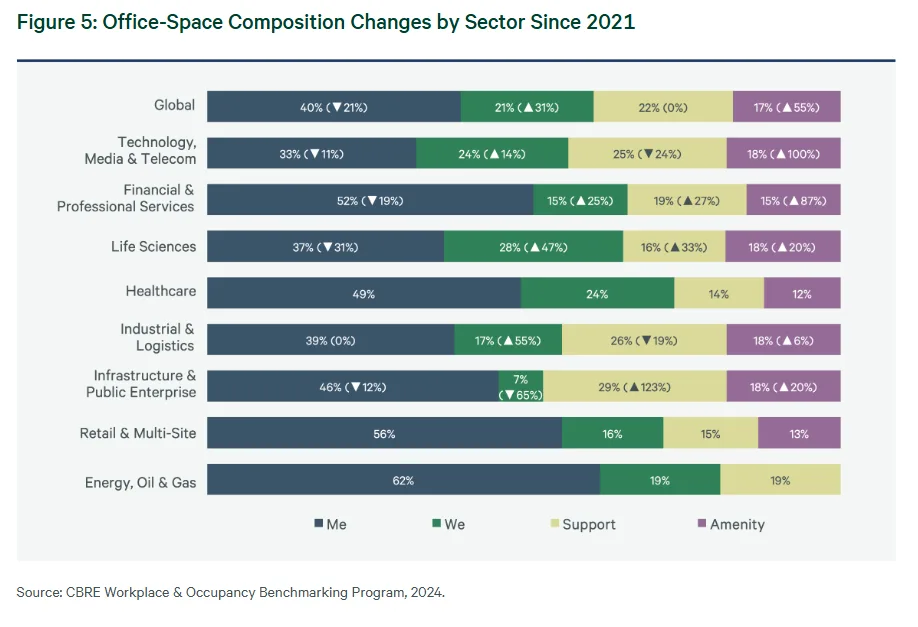
Why It Matters
Hybrid strategies are no longer experimental — they’re embedded. The evolving metrics show that organizations across sectors are learning from early adopters and tailoring space to support both productivity and culture. Whether tightening space use or reinvesting in collaboration, companies are now designing with purpose.
What’s Next
With experience and hybrid strategy now at the core of office planning, organizations should:
- Monitor density, sharing, and collaboration ratios to ensure alignment with employee expectations and business needs
- Embrace sector-specific trends while building in flexibility
- Use workplace metrics not just for space efficiency, but as tools to improve employee satisfaction and performance
As CBRE’s report concludes: 2024 may not be the end of workplace evolution, but it marks the beginning of a more stable, strategic era.
